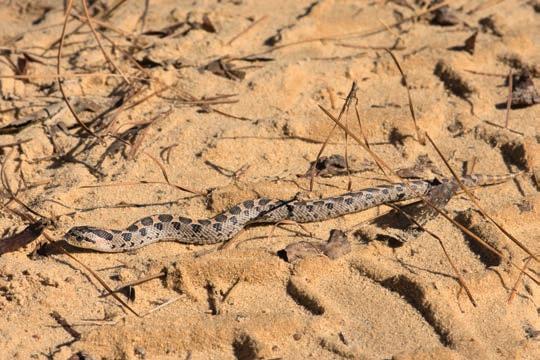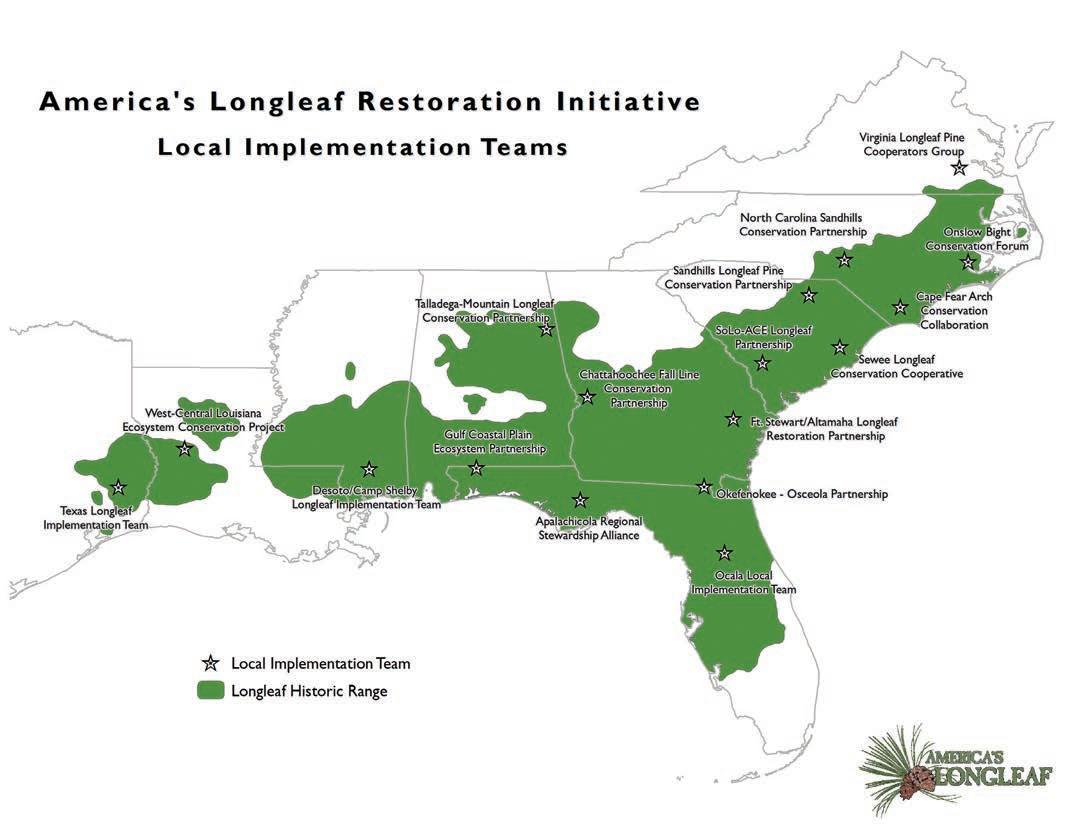
2 minute read
Window into Wildlife

WINDOW WILDLIFE into
Advertisement


Southern Hognose Snake
Heterodon simus


All photos by Ben Stegenga.

Description
The southern hognose snake is most easily recognized by its sharply upturned snout and its prominently keeled scales. It has dark brown, squarish blotches down the center of its back and alternating smaller blotches along the sides with a background color of beige or tan. A light orange or tan stripe is usually visible along the center of the back.
Southern hognose snakes are easily confused with eastern hognose snakes (Heterodon platirhinos) and pigmy rattlesnakes (Sisturus miliarius). Eastern hognose snakes are highly variable in pattern and coloration, sometimes appearing similar to the southern hognose, but are often larger with a less distinctive upturned snout. Pigmy rattlesnakes are similar in size and have a similar pattern, including the stripe along the back, but they have a tiny rattle, vertical pupils, and a small pit between the eye and nostril.
Diet
Although southern hognose snakes occasionally prey on lizards, frogs, and small mammals, their diet is almost exclusively comprised of toad species (Anaxyrus) and eastern spadefoot (Scaphiopus holbrookii). Specialized anatomical traits enable them to capture and prey upon these frogs. Their sharply upturned snout may aid in the excavation of buried toads, and their rear fangs are used to puncture toads that inflate themselves to keep from being swallowed.
Management Actions
Continued protection and prescribed fire management of upland longleaf pine woodlands and savannas are required for this declining species. When timber is harvested, stumps should be left to serve as underground refugia and hibernation sites.
Habitat and Habits
Southern hognose snakes are primarily associated with dry, upland habitats with sandy soil. This species is extremely fossorial, meaning that much of its life is spent underground in burrows, stump holes. and root channels of rotting trees. Their fossorial habits, cryptic coloration, and secretive behavior make them extremely difficult to locate. Most sightings occur diurnally from May – June and from September – October each year.
Colloquially known as puff adders or spreading adders, the southern hognose snake is a mild-mannered snake that rarely tries to bite. Species within the Heterodon genus, especially the more common eastern hognose, are phenomenal actors as they may also roll over, feign death, and regurgitate their latest meal, all in the attempt to “play dead.” The southern hognose will sometimes flare its neck and hiss when threatened, similar to the eastern hognose snake.
Conservation Status
Once found in the Southeastern Coastal Plain from southern North Carolina to southern Mississippi and into Central Florida, only scattered locations in South Carolina, North Carolina, Georgia, and Florida exist today. The southern hognose snake is listed as state threatened in South Carolina and Georgia and state endangered in Alabama and Mississippi. In North Carolina, it is ranked as a state species of special concern, and in Florida, it is ranked as a species of greatest conservation need.
References
Jensen, J., Camp, C., Gibbons, W. and Elliott, M., 2008.
Amphibians and Reptiles of Georgia. Athens, Georgia:
University of Georgia Press, pp.356-358.











